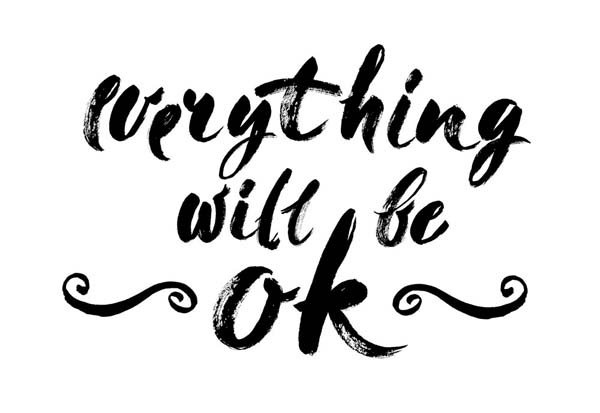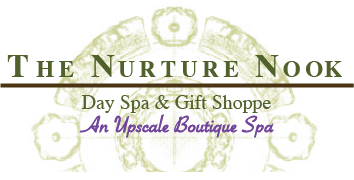What is Okay?

Lately, I’ve heard a lot of commentary about how it’s “okay to not be okay.” I agree with the expression, but feel it would be more complete to add “but it’s not okay to stay that way.”
While I agree with not having to pretend that you feel okay when you don’t, I still believe in a more private, discreet way of handling these moments or seasons. I see people almost using this phrase as a crutch to publicly validate themselves and the choices they make that keep them in this state of mind. It appears their lives remain in a vortex, recycling a “woe is me” attitude.
I do believe that when people feel momentarily lost, it can be supportive to know that others have gone through similar experiences and found ways to move through their angst, sorrow or bad moods. No one consciously wants to “not be okay,” but many people repeat cycles that seem to keep them in a constant state of “not being okay.”
To continually express that you are living with haunting memories or the effects of bad experiences in your life, you unwittingly perpetuate their control over you. Letting go or redirecting thoughts to create a different experience can be challenging. When you take intentional action to create change, you can apply practices that will assist in this redirection. Talking out some of your concerns or feelings is perfectly natural with close friends, a trained professional or even sometimes a stranger. Public or social media platforms is not a recommended forum for therapy or real transformation. There can be a lot of opinions, and a lot of well-intentioned but misguided advice from people who aren’t going to know the whole real story.
Face-to-face conversation, with inflection, body language and emotion, provide a better opportunity for help. If you cannot be face-to-face, talking voice-to-voice works too. If you don’t want to remain in a repetitious cycle that bogs you down, find someone that knows more about breaking patterns and habits than you do.
“Faith is not about everything turning out okay. Faith is about being okay no matter how things turn out.” — Annette Powell
Many people are unaware of how they truly feel. They can often feel confused because they don’t know how to identify emotions. When you can begin to identify what you are feeling in a given situation, you can learn how to manage your emotions rather than continuing in the state of anxiousness, anger, sadness and so on.
If you want to be “better than okay,” here is an exercise to get you started. This has been suggested by author and psychologist Donald Aultman. Even if you are overwhelmed by emotions, research shows that simply by naming them you can actually be less prone to reacting to them. Some basic emotions that have been found in facial expressions across cultures are anger, surprise, disgust, fear, sadness and joy. Beyond these emotions are numerous secondary emotions like hurt, frustration, anxiety, love, guilt, shame, grief, optimism, boredom, serenity, trust, uncertainty, curiosity, and so on.
When you are unaware of your own emotions, it is hard to understand the emotions of others. When you can understand others, this builds a foundation of empathy. Empathy builds trust, and trust builds stronger bonds of acceptance and understanding. In order to have romantic intimacy, closeness and the ability to work through problems, you need empathy. Excerpted from his book The Joy Compass, Donald Aultman suggests the following:
Exercise: Create a Feelings Journal
This practice is a good way to increase your emotional vocabulary, and you can learn this language, even if your family never taught this to you, by following these steps:
1. In your journal, draw three lines down a page so that you create four columns.
2. At the top of the far-left column, write “Event.”
3. Label the middle-left column “Body Feeling.”
4. Label the middle-right column “Emotion.”
5. Finally, label the far-right column “Intensity.”
As challenging life events or situations occur, write them down in the left column. Events here could include any difficult situation, whether at work or home. In the middle-left column, list all the feelings that occur in different parts of your body. In addition to noting where a feeling occurs—the chest, stomach or heart—also describe what it feels like. Is it hot, warm, tight, heavy or hard?
Next, use the middle-right column as a place to give this feeling a name. Even if you have to guess at it, that’s okay. Remember that for some emotions, such as anger, there can be other underlying emotions, including feelings of hurt or sadness. Even if your family of origin didn’t possess any kind of emotional vocabulary, you can build your own by digging deep and observing your feelings. After you have written down the name of the emotion, use the far-right column to rate the intensity level on a scale from 1–10, with 1 being extremely mild and 10 being extremely severe. Road rage, for example, would definitely be in the 7 to 10 range. Take time to reflect on your written feelings now. Get to know them. Get to know yourself. Eventually you will gain a deeper understanding of how you respond in different situations. The ability to name emotions actually helps you to become more aware of them and improves your control over your feelings. Instead of reacting to emotions, you will gain the skill to use this information to help fine tune greater joy in your life.
When I’m sad I don’t want someone to tell me about how “it gets better” and that I need to “move on.” I need someone to tell me that it’s okay to be sad, and that my feelings are validated. I don’t need someone to tell me about how much happier I could be, I need someone to hold me and tell me I’ve been strong and that it’s okay to sometimes not be okay.” — unknown
